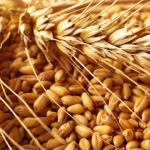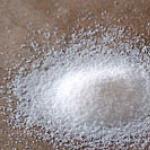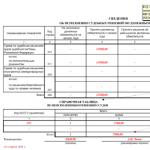Growing cucumbers requires a lot of time and effort. Every vegetable grower strives to protect the crop from diseases and pests. Onion peels, which are often undeservedly thrown away, can come to the rescue with this. It is used as fertilizer or protection against harmful insects. We will tell you how to protect plants, properly prepare healthy decoctions and feed cucumbers with onion peels.
Many traditional dishes in our cuisine include onions. We eat it with pleasure, knowing about the beneficial properties for the human body. However, do not rush to throw away the onion skins. It will bring many benefits to the plants in your summer cottage. For example, decoctions made from it have a beneficial effect on cucumbers.
Onion peels contain micronutrients and vitamins. Its infusion activates vegetation and protects against harmful microorganisms. We recommend collecting onion peels throughout the year. Be sure to dry thoroughly and place in a special fabric bag.
Onion scales have a number of useful properties:
- stimulates the immunity of cucumbers;
- restores diseased seedlings;
- works as an antibacterial agent for various plant lesions.

These properties are especially in demand during the growing period of cucumbers, as the growth and strengthening of the root system is activated. The husk is healthier than the onion itself. This is explained by the composition:
- Carotene. Performs the function of an immunostimulant. Natural antioxidant. Increases the resistance of seedlings to fungi and rot, stimulates metabolic functions.
- Phytoncides. Destroy harmful microorganisms contained in the soil. Preparation of the solution facilitates the unhindered movement of phytoncides into the water, as they are located on the surface of the scales.
- B vitamins. Promote active growth of cucumbers. Promote the formation of carboxylase. Strengthens the root system, main stem and leaves.
- Nicotinic acid (PP). Participates in the processing of sulfur, oxygen, nitrogen. It is useful to feed cucumbers with a peel solution in case of lack of light. Strengthens roots.
This list of useful microelements helps the husk to successfully compete with artificial biostimulants and chemical fertilizers.

Recipes for dressing from onion peels
The use of onion peels for cucumbers can be as follows:
- feeding;
- for disease prevention;
- protection from harmful insects.
You can use it in any convenient way:
- for preparing decoctions;
- infusing the husks in cold or hot water;
- Apply the dried peel to the ground at the same time as loosening.
Preparing the tincture
To make an effective infusion, you will need onion peels (200g) and a bucket of water. Mix thoroughly, give the raw material a chance to get wet. The mixture is kept for 4 days, then filtered. The resulting mixture is sprayed onto cucumber bushes.
The infusion must be used immediately after preparation! You should not make reserves, otherwise they will turn sour.
A similar infusion is prepared using hot water. Grind the husks (half a bucket) and fill with water (5-8 l). Cover tightly and leave for 2 days. The infusion turns out to be concentrated, so after straining, you need to add water in a 1:1 ratio.
To spray cucumber plantings, you can use an infusion with onions, which are pre-chopped (half an onion). Pour the mixture with hot water (1 liter) and leave it tightly covered overnight. Don't forget to strain before using.
Recipes for decoctions for watering and spraying
The decoction is used to prevent pest attacks and as foliar feeding. Take onion scales (200 g) and pour into a pan of water (5 l). Boil for no longer than five minutes. Let cool and leave for 3 hours. Dilute in a ratio of 1:5 with water and immediately spray the cucumber plantings.
Dry husk fertilizer
When preparing the soil in the spring, it is recommended to apply dry husks as fertilizer. To prepare a nutrient composition for planting seedlings in open ground, mix chopped onion peels with wood ash and sprinkle directly into the holes. In addition to nutrition, this mixture will protect against insects.
Please note that after adding dry onion scales to the soil, subsequent spraying or watering with the same composition is not required. Avoid oversaturation of the soil. If there are pests in the greenhouse, place handfuls of onion skins around the perimeter.
Treatment of cucumber diseases with peels
Onion peel is an effective remedy in the fight against a number of diseases of cucumbers: black leg, gray rot, bacteriosis, black rot.
If the cucumbers look lethargic, with yellow drooping leaves, fertilize them with onion broth. Place 300 grams of husks in a bucket, add warm water and stir. Bring the mixture to a boil. Strain the broth after cooling. Apply the decoction by watering the root, but first dilute it with water (1:5).
There are two ways to fight the black leg of cucumbers:
- add to the soil when planting seedlings;
- water the infusion at the root.
Pour the husk (200g) with a liter of water and leave for a day to steep. Strain the finished infusion and dilute it with water 1:3 before watering.
When affected by black or gray rot, it is useful to carry out preventive spraying of the green mass of cucumbers. Three sprays per season are enough. A decoction or tincture is suitable for these purposes. If the solution is concentrated, do not forget to dilute it with water first so as not to burn the cucumber leaves.
How to properly treat pests
Harmful insects really do not like to settle in areas where onion peeling is carried out. Therefore, fertilizing has a second positive effect - protecting cucumbers from pests. A decoction of onion skins is effective in the fight against insects:
- thrips;
- fleas;
- spider mite;
- Colorado beetle.
Decoction recipe: pour 300 grams of onion scales with warm water (10 l). Boil over low heat for no longer than 5 minutes. The broth must cool before straining. Since the spray solution is concentrated, dilute it in water (1:5).

To get rid of spider mites or thrips, prepare a richer infusion. Pour three glasses of onion peel with two liters of warm water. Let the infusion stand for two days, then strain. Before spraying, add two parts water to one part infusion. It is recommended to add liquid soap to the infusion before use for better adhesion.
An infusion prepared as follows will help against aphids: pour 200 grams of husk with boiling water (10 l) and let it brew until the morning. Treat cucumber leaves once every five days to prevent the spread of aphids.
Onion peel, regardless of the method of application, is a natural, effective remedy for diseases and pests. Decoctions and infusions are harmless. The use of onion husks does not entail large expenses. This is an affordable tool. If you are not familiar with the effectiveness of this folk remedy, be sure to put our recommendations into practice, and you will be pleased with a high-quality harvest.
With the onset of warm months, the hot season begins for all summer residents and gardeners, almost in the literal sense of the word. During this period, there is a lot of work and worries ahead, and the most pressing matters are planting, pest control, fertilizing, and so on.
In this regard, for many amateur gardeners, it may be urgent to look for tips and recommendations for caring for their own green spaces in the garden, in the garden and in the apartment.
A beginner may ask - what are the benefits of onion peels for the garden, vegetable garden and indoor plants? In this case, it is worth highlighting its main useful properties and characteristics:
- Onion peel decoction and the dry raw materials themselves serve as an excellent, and, most importantly, natural fertilizer that nourishes the plants themselves without harming them, unlike chemical compounds.
- The presence of a coloring pigment – quercetin, gives onion peel bactericidal properties when a decoction from it helps to remove all pathogenic microflora in the soil and pathogenic organisms.
- Also, the husk itself improves the soil structure itself, making it more loose and airy, rich in nutrients.
- Onion peels and decoctions prepared from it cope with pests of the garden and indoor flowers - mites and aphids, copperhead and powdery mildew.
- An infusion of onion peels helps to regenerate plants and, as a result, even sick plants, damaged by pests or weakened due to a lack of vitamins, will grow, as they say, “by leaps and bounds.”
The benefits of onion peels in the garden
Pest control
Options for preparing an infusion from onion peels.It’s easy to prepare and in this case there are 3 options:
- 250 gr. onion peels are poured with 10 liters of cold water, left for 4 days and, after filtering, sprayed on the plants. To completely remove all pests, the procedure is repeated 3 times with an interval of 5 days.
- Fill a regular bucket halfway with onion peels and add hot water to the top, leave for 12 hours, cover with a lid. Then filter and dilute with clean water in equal proportions - this solution is sprayed on all affected green spaces.
- The fastest option is 7 gr. husks are mixed with 12 g. 1 liter of chopped onion is steamed. boiling water and let it brew for about 7 hours in a closed container - filter and immediately use it to treat the plant.
Spray the plant completely, paying special attention under the branches and foliage, using the entire tincture - you should not store it for the future, as it loses all its beneficial properties.
For what diseases and problems is a decoction of the husk used? How else can it be used? This question is worth considering in more detail.
Pest control
In this case, a tincture made from onion peels helps remove aphids and spider mites from vegetables, fruits and any greens and flowers. Along with this, it is successfully used to combat apple borer and mites that infect strawberry bushes, plant bugs and voracious caterpillars.
Fighting downy mildew and infectious diseases using husks

A plant disease such as downy mildew mostly affects cucumber beds and appears at all stages of growth and development. But for the most part it affects cucumbers in July-August, during the peak fruiting period.
The infusion itself, prepared to choose from the recipes described above, will help overcome the infectious disease– it can be used both during the control process and by treating cucumbers in advance, for preventive purposes, carrying out procedures once a week.
Along with this, the presented tincture helps not only in caring for cucumbers, but is also a proven remedy for bacteriosis of such vegetable crops as cabbage and radishes. At the first manifestations of the disease, such as yellowing, the appearance of black veins on the plant, all affected specimens are treated with a ready-made infusion.
The presented improvised shower will also be useful for tomatoes - it not only eliminates all diseases, but also acts as an excellent feeding for them.
So it is enough to add just a handful into each hole when planting - this is the step that will help disinfect the soil, protect the plant in the future during its growth and fruiting, and save the resulting fruits from damage by blackleg, garden pests - slugs, mole crickets, wireworms.
We fertilize the garden, vegetable garden and indoor plants

Many experienced gardeners have noticed from personal experience that the use of tincture not only nourishes the soil with a full complex of macro- and microelements, but also improves its structure each time.
Preparing this infusion is simple - take 8 liters of husk for a liter jar. boiling water, steam it and let it brew for a day.
Next, the infusion should be strained and diluted with clean water in a ratio of 1 part infusion and 5 parts clean water. It can be successfully used for spraying plants and for fertilizing them, both garden vegetables and fruits, and indoor flowers.
Onion peels as a means for winter storage of root vegetables
Many gardeners, after harvesting root crops - potatoes, carrots, parsley root or celery, etc., carefully sprinkle them with the same onion peel before putting them in the basement or cellar for winter storage.
Because of this, knowing such useful features of it, you will no longer throw it into the bucket, stocking up for the future.
How to use onion peels for indoor plants
Feeding your green pets with such an improvised liquid fertilizer will help revive them right before your eyes - from such feeding they grow better and faster, and suffer less from pests and diseases.
Preparing such an infusion is also simple - just steam a large handful of husks in one and a half liters of water, bring it to a boil, and boil it for about 5-6 minutes. After cooling the broth, and voila - you can “feed” indoor flowers and plants, while at the same time spraying them, supplying them with the necessary vitamins and fighting pests.
When feeding and treating indoor plants, as well as garden ones, you should remember that for each next procedure you need to prepare a fresh infusion. There is no point in storing a previously prepared infusion for a long time - all the useful components disappear from it, and over time it goes rotten.
For those who are too lazy to cook something complicated, do not bother with the decoction - just add the husk itself to the earth mixture and this way you will ensure that all the useful components immediately flow into the soil. If you do this, you should water the plant with warm water, the temperature of which is no more than room temperature, about 27–29 degrees.
How to treat plants with husk infusion and at what intervals
At the very beginning, it is worth saying that it is recommended to use the decoction on the day of its preparation, when it has already infused according to the recipe for 4-6 hours. If you leave it too long and don’t use it for a long time, storing it in reserve, it will simply rot and will not benefit the plant.
The frequency of use of the decoction depends on the problem itself; the decoction can be used once every 5–6 days, and for pest control once every 3–4 days.
To prepare the husk for its use in the garden, it is used in a decoction from a healthy onion; it is advisable to choose a bright-colored husk, with a maximum content of coloring pigment, and this is the most useful raw material.
Almost every one of us at least once in our lives has thought about how to strengthen the immune system, how to cleanse the body and how to simply restore vitality. All of us, of course, can go to the pharmacy for expensive vitamins and dietary supplements, completely forgetting that nature itself offers a storehouse of useful vitamins and minerals.
Today we’ll talk about the benefits of onions and onion peels. Often we just throw it in the trash, not even knowing how useful this product is. So, it is the onion peel that contains K, Mg, Fe, Ca, as well as vitamins P, C, E. The onion peel contains fibers that can prevent major diseases of the cardiovascular system, the risk of endocrine diseases, gastrointestinal diseases, and also slow down aging of the body as a whole. It is useful for colds, throat diseases, periodontal disease, stomatitis, as it has a whole range of antiseptic properties. It can be used to wipe and disinfect wounds, diaper rash, and minor burns.
It can be used to color and strengthen hair. Many people know that henna, colorless henna, is suitable for this. But it turns out that she’s not the only one. From the husk, the hair will become silky and soft, acquiring a rich reddish tint, and strengthened. By the way, she successfully fights dandruff. Let's not forget about the Easter holidays and the fact that onion peels are used to paint Easter eggs, which does not cause any harm to the product. It can also be used to dye fabrics and wool. Just as you can use onion juice to remove stains from clothes and shoes, remove rust from metal products, and clean windows and mirrors, so onion peels can be used in cooking, saturating foods with vitamins and phytoncides. If you add onion skins while brewing tea, you can reduce blood pressure. It also contains fiber and fructose, flavonoids. These are polyphenols - a compound of phenols - organic compounds of the aromatic series.
As you can see, the benefits of onion peels are immeasurable just in words. But this is all theory. It's time to move on to practice. Let's talk about how onion peels are useful for us in the vegetable garden or garden, and how we will use them there. Before you learn about the different ways to use onion peels for medicinal purposes in the garden, you need to know that you can only use the peels of healthy onions.
Onion peels for the garden: application
Before starting gardening activities, it is recommended to use onion peels. When preparing the soil, we spray it or water it with a strong decoction of onion peels. Why are we doing this? This perfectly protects seedlings from the spread of fungal diseases and mold, and regular use of onion peels in the garden will help you not only increase productivity, but also strengthen the plants’ resistance to diseases and strengthen their growth. And solutions from onion peels are a wonderful fertilizer for the foliar and root systems of plants. The husk in the form of infusion and decoction will help us in the fight against:
Apple codling moth,
Colorado potato beetle,
spider mite,
aphids,
fleas.
Adding just a handful of onion peels to the planting holes will protect garden crops such as cabbage, tomatoes, and potatoes from mole crickets and wireworms.
Dissolving in the soil over time, onion peel inhibits the spread of pathogenic microflora, promotes the growth of beneficial microflora, enriches the soil with microelements, and under such good conditions, garden vegetables produce the best yields.
Onion peel decoction, application
You can prepare the decoction as follows. Pour a couple of dense handfuls of husks into a bucket of water at about 40 degrees - bring to 100 degrees in an enamel bowl. Now the broth needs time to cool and brew. After 4 hours, the decoction can be used by pouring 2 liters of decoction into a bucket of water. It should be at room temperature. Pour the liquid into a spray bottle and spray the cucumber leaves if they turn yellow or look unhealthy. This will help heal and strengthen them. It is better to do this procedure on a cloudy day, before the sun rises or after it sets, then you will probably not cause burns to the plants. The same decoction will saturate the soil with nutrients necessary to stimulate growth, increase productivity and fruiting of pumpkin crops (zucchini, zucchini, squash, cucumbers, melon, watermelon, pumpkins), as well as potatoes, carrots, radishes, all types of cabbage, leafy greens , radishes, turnips and tomatoes. Onion peels dry easily, so it will not be difficult to collect them throughout the year. It will definitely never be out of place in the garden.
To get rid of pests in the garden, you should resort to another folk remedy - combining a decoction of onion peels and laundry soap, also known for its healing properties. Here we will need a lot more onion peels.
Onion peel infusion, application
Pour about half a bucket of compacted raw materials with almost boiling water in a bucket and let it brew for a day. After a day, drain the infusion and add 40 grams of crushed laundry soap. Mix thoroughly, helping the soap dissolve. Dilute the prepared solution in equal parts with water and spray the plants. This treatment is an excellent prevention of pests and can be repeated once a week. But no more than 3 times.
When you harvest your vegetables in the fall, you need to take care of their storage. Here, onion peels will also come to our aid, which can be used to transfer vegetables. It will help maintain their freshness and elasticity. Stops rotting.
Onion peels for the garden: application
The best way to treat trees is to irrigate them with a healing decoction. This decoction is very similar to the decoction we used to process cucumber leaves, but it should be more concentrated. So, pour boiling water over a third of a bucket of compacted onion peels, boil and leave until it cools. Then add 90 grams of finely grated laundry soap. Stir to dissolve the soap. We dilute the finished broth in a bucket of clean warm water. We irrigate the foliage of trees and crowns with this decoction, sprinkling generously with a garden broom.
You can also pour up to 3 liters of this decoction under each tree.
Preparation of tincture, use
To prepare an alcoholic infusion from onion peels, we will need vodka or alcohol, that is, 40-70°. The husk must be dry and brittle so that we can easily grind it. Grind the husks and mix with vodka or alcohol in a ratio of 1 to 6. Leave in a dark place for at least a week, but no more than 10. Store the prepared medicine in a cool, dark place. It can also be in the refrigerator. Not near the freezer. We drink this infusion 5 grams per day. This will help us strengthen the body's resistance to infections, improve our mood and vitality in general. This infusion is also useful for stomatitis and stomach pain. The infusion is effective when treating micro wounds and scratches that need to be disinfected. In case of mosquito bites, the inflammation will go away faster and the itching will not be so intrusive.
Onion peel decoction: health uses
You can prepare a decoction. Pour approximately 2 tablespoons of chopped onion peel into two glasses of boiling water and boil in a water bath for about 15 minutes. After this, the infusion must be cooled and strained. Leave to infuse in a cool place for 10 hours. Further, it can be used as compresses and lotions, and for oral use in the treatment of various diseases of internal organs and systems. Can be used to gargle for sore throats and laryngitis.
There is also another decoction made from onion peels. Its preparation is slightly different from preparing an infusion. Here, onion peels are poured with cold water in a ratio of 1 to 10. The mixture is boiled for 20 minutes, filtered, and diluted with cool water, again bringing to a ratio of 1 to 10. This decoction is good for lotions and rinses.
For example, if your joint or knee hurts, make a lotion or compress by generously moistening and squeezing out cotton wool or other material that absorbs moisture well. Squeeze it out and spread it evenly on the sore spot. Wrap in cellophane or cling film and wrap in a warm woolen cloth or scarf. You can leave it overnight. A decoction of onion peels is a natural medicine and will not harm you. Often you can get rid of gumboil or an abscess that you might get, say, during a manicure or pedicure. Also, a cotton swab, generously moistened and applied to the sore spot, will allow you to get rid of the inflammatory process and unpleasant pain as quickly as possible.
Onions are very useful and in demand in themselves: they are eaten with pleasure raw, fried and boiled, and they are used to treat various ailments. Its shell is usually used as a natural dye. However, this is not all that can be said about onions. Onion peels are an indispensable universal remedy for garden and apartment plants. What can onion waste be useful for in the country and at home, how to prepare and use onion infusion and decoction? Let's talk about this in more detail.
About the benefits of onion peels
- This is a natural product. It cannot harm plants.
- The husk is full of minerals and vitamins, it is healthier than the onion itself.
- It doesn't cost money like other fertilizers and insecticides.
- It is easy to find, because every housewife always has it at hand.
- The decoction and infusion are simple to prepare and easy to use.
- There is no need to use protection for hands and other parts of the body when working with the solution, as it is non-toxic.
- Universal application.

A few words about application
- Feeding. Are the plants weakened, have lost their healthy appearance, are they withering away, or are they developing poorly? Onion peels will come to the rescue. It will bring indoor and garden crops back to life. It will also strengthen and improve the health of young seedlings.
- . Before planting seedlings, the soil must be disinfected (especially if it was taken from the garden). To destroy the larvae of dangerous pests, as well as spores of pathogenic organisms, onion peels are ideal.
- If the plant could not be protected from harmful insects or is sick, a decoction of onion waste will help it.
- After planting flower seedlings or vegetable crops, did frost strike? You can restore the vitality of affected plants with an infusion of onion skins.
In what form should onion peels be used?
- Decoction.
- Infusion.
- Onion waste in its pure form.
Decoctions and infusions are used for watering and spraying. The dried husks are placed in the soil in its pure form to improve the quality of the soil.

Onion peels for seedlings
- Carotene, which is present in large quantities in carrots. Onion peel also contains this component. What does it give to plants? This substance has antioxidant properties. It is necessary so that weakened and damaged seedlings regain their strength. Flowers grown on the balconies of large cities, where the air is heavily polluted by exhaust gases, also need carotene. Garden crops (tomatoes, cabbage, potatoes, etc.), by absorbing this element, strengthen their immunity.
- Phytoncides are components that accumulate in large quantities in onion skins. They destroy harmful bacteria, fungus, and some types of microorganisms in the soil layer. For seedlings, these elements are useful in that they prevent the development of “blackleg” (fungal disease). Tomatoes often suffer from this. To use phytoncides with maximum effect, onion peels must be soaked in water to prepare an infusion.
- Vitamin B complex. It is present in large quantities in onions and their skins. The use of onion peelings as a top dressing in the form of an infusion will saturate the sprouts of young seedlings with useful nutrients. They grow faster, the leaves become stronger, the stems become thicker. In the future, seedlings will produce a harvest earlier, and the roots of adult plants will not rot.
- Vitamin group RR. The set of these vitamins is known under another name: nicotinic acid. A small dose of such microelements has a beneficial effect on the development of any type of plant crops, from their planting to the ripening of fruits. If plants suffer from lack of light, nicotinamide will come in handy. This substance will strengthen the root system, which is especially good for crops growing on clay soils.
Use peelings of red onions as a top dressing. It contains a large amount of quercetin. It is very useful for young seedlings: it will strengthen the immune system, heal diseased sprouts, and accelerate growth.

More about the types of applications
- Decoction
Preparing the decoction is very simple. Take a few handfuls of onion peelings, mix with water in an enamel bucket, and boil. Then let it brew and wait until it cools down. The prepared product is filtered and diluted to the desired condition.
You can prepare a decoction in small quantities. Take two liters of hot boiling water for a glass of onion peelings.
Garden plants, such as cucumber, carrots, tomatoes, are watered up to three times at intervals of one week. Can be sprayed. This will destroy harmful microorganisms in the soil and enrich it with useful elements.
To treat the soil where the seedlings will grow, you need to water or spray it several times. The broth should be strong enough. This way you will disinfect the planting site for future plants. By treating the seedlings, you will increase their protective properties.
The fight against “black leg” is also possible with the help of onion peels. Seedlings are susceptible to this disease (especially tomatoes). Preventive measures: watering the soil with seedlings once every seven days with a decoction of onion skins.
- Infusion
How to cook? Firm the onion skins well and fill two glasses. Pour two liters of boiling water over it all. Leave for two days and strain. The prepared product is diluted as needed.
We fertilize tomato seedlings. The concentrated infusion must be diluted: take one part of the infusion and three parts of water. Feed the seedlings two to three days after planting. Can be used if a young tomato looks lethargic and its leaves begin to turn yellow.
To defeat rot and fungus, you need to water the roots of young plants.
When controlling pests in the garden, twice during the growing and maturing season, seedlings should be treated with infusion by spraying.
You can dilute the infusion in the following proportion: one part infusion and two parts water. Add a little laundry soap there: take 1 liter of solution for 2 g. This product will destroy harmful insects such as aphids, mites, thrips. Three liters of this infusion can be equated to several tens of liters of toxic insecticides.
Do not store decoctions and infusions for a long time. The liquid may deteriorate and become stinky. With this method you will only harm the plants.
- Peel in its purest form
The soil is fertilized with it before the seedlings are planted. Add husks at the rate of three liters per square meter of soil. The soil is dug up along with the applied fertilizer.
Onion peelings are sometimes scattered around the greenhouse to repel pests.
You can sprinkle the soil in a container with seedlings with onion skins. What happens when you water the seedlings? Penetrating through the husk, water will saturate the soil with useful substances.
Not all indoor plants love onion skins. For example, in the case of ficus trees, such feeding will not give anything, and in some cases it can even harm (plants slow down in growth).
Before spending money on expensive and toxic products for feeding plants or controlling garden pests, take a look around. Perhaps you will have an affordable, free, easy-to-use and equally effective remedy at hand.
A good owner will never throw away such a natural and healthy product as onion peels. Our ancestors knew about the benefits of this natural component. Use the wisdom you've accumulated over the years and you won't regret it.
Adherents of the principles of organic farming, as well as gardeners who adhere to traditional views on growing garden and vegetable crops, pay tribute and appreciate the beneficial properties of such a natural insecticide and organic fertilizer as onion peels. Onion peels for the vegetable garden, as well as its use in horticulture and horticulture are the topic of this article.
The benefits of onion peels for the garden
Usually, after peeling the onion from the top layer (skin), it is thrown away as having no practical value. But experienced gardeners know that it can be used as a fertilizer and as a potent remedy against diseases and pests in their summer cottage. The benefits of onion peels for the vegetable garden are due to the fact that it contains:
- vitamins (groups B, E, PP), stimulate photosynthesis processes, plant growth and development;
- carotene (“progenitor” of vitamin A);
- phytoncides (antibacterial substances that destroy pathogenic microorganisms that cause various diseases).
These biologically active substances in combination have the following types of effects on plants:
- as fertilizer and top dressing;
- as a mulching material;
- strengthening resistance to diseases and pests;
- fight against bacterial and viral diseases;
- destruction of pests.
This versatility of use makes onion peelings an indispensable assistant not only in the country, but also in indoor floriculture.
Benefits of use
The main advantages of using onion scales in the garden include:
- It has a complex positive effect on the growth and development of plants.
- Environmental safety (absolutely harmless to humans, plants and animals).
- Cost-effective (in fact, onion peelings are considered food waste).
- Easy to prepare and use.
Dry husk and its use
Dry onion peels are used as fertilizer for plants and also as a mulching material. This is the easiest way to use it; you just need to dry it and collect the husks in special bags or containers.

Fertilizer from onion peels is applied in the spring or autumn when digging the beds. Also, feeding plants with onion peels is carried out when planting seedlings - a handful is added to each planting hole.
As mulch, onion peels are simply scattered around the plants, after being slightly chopped. As a result, there is a triple effect - fertilizing, disinfection and mulching.

Using onion peel infusion in the garden
You can also use onion peels in the garden as an infusion.
Cooking features
Preparing an infusion from onion skins does not involve heat treatment, but its preparation will take much more time than usual. There are several options for preparing infusions of varying concentrations.
Option 1. The onion skin is filled with water heated to 40 - 45 degrees Celsius and infused in a hermetically sealed container for 15 to 20 hours, placed in a dark, warm place.
Option 2. Take 20 g of husk per liter of water at room temperature and leave for a day in the dark.
Option 3 (for pest control). To prepare this infusion, you need to pour onion peelings with warm water and leave for 3 to 5 days. The ratio of ingredients is 1:2 (1 part husk to 2 parts water).
It is believed that the infusion is much more effective than the decoction, because over a period of 1–5 days most of the beneficial substances will pass into the water, the solution will be more concentrated and will act much faster.

How to use
The infusion is effective when used as an organic fertilizer. It can be used for almost all vegetable, fruit and berry crops, for example:
- for cabbage;
- cucumbers;
- tomatoes;
- strawberries;
- raspberries;
- grapes;
- fruit trees;
- zucchini;
- potatoes;
- sweet pepper.
Onion peels are also suitable for cucumbers in a greenhouse, since in this case it will also prevent the proliferation of pathogenic microflora - an eternal problem of growing crops in protected soil, and cucumbers suffer first of all. Onion infusion is also an effective fertilizer for tomatoes. Plants need to be watered at the root, the flow rate of working fluid is 1 liter for each. You can use an infusion of onion peels for spraying; it is carried out until the leaf is completely wetted. This procedure will speed up flowering and stimulate the formation of many ovaries on tomato bushes.
You can also use the infusion for seedlings. It has been noticed that its watering has a beneficial effect on the growth and development of young seedlings of all crops, as it not only nourishes, but also protects plants from bacterial and viral infections, such as:
- "blackleg";
- various types of rot - gray, black, etc.);
- powdery mildew;
- bacteria of different types;
- pathogens of tuberculosis.
Sometimes an infusion of onion peels and its use in the garden help in controlling pests; in this case, it is prepared according to option 3 and household (shavings) or green potassium soap is added for better adhesion of the working solution (about 1 tablespoon).
Decoction for pest control
You can also use onion peels in your garden in the form of a decoction.
Cooking features
Its preparation differs from the preparation of an infusion in that the mixture of water and onion skin is taken in different proportions and brought to a boil. In this case, the infusion time is significantly reduced and ranges from 3 to 5 hours.
Option 1. Place 2 full handfuls of onion skins in water (10 l) and bring to a boil (boil for no more than 5 minutes). Leave for at least 4 hours.
Option 2 (concentrated). Pour hot water into the onion skins in a ratio of 1:2, boil and let stand for 2 days.

How to use
In addition to the fact that you can water plants in the garden with onion peels for feeding, its decoction is also used as a natural insecticide in the fight against such harmful insects as:
- various types of aphids;
- codling moth;
- spider mite;
- thrips;
- flea beetles of various types;
- Colorado beetle.
For aphids and other pests of the garden and vegetable garden, it is necessary to spray with onion peels, a decoction prepared according to the above methods, with the addition of laundry or green soap. It is necessary to treat all infected plants and those growing in the neighborhood. It is most convenient to use a garden sprayer. The main advantage over the use of chemicals is that during the procedure there is no need to protect the respiratory tract, face, etc., since the working solution is absolutely safe for humans.
Use for indoor plants
In addition to the above options for using onion peels in the garden, it is worth noting its effectiveness when used in indoor floriculture. The decoction is used to disinfect the soil for flowers, which allows you to preserve its structure and chemical composition, but at the same time destroy all pathogens and larvae of flower pests. You can also spray on the leaf. This type of feeding best stimulates the growth of green mass of indoor flowers and the formation of buds.
There is a slight difference only in the proportions and preparation of the decoction: take 1.5 liters of water per handful of onion skin, bring to a boil and boil for 7 minutes. After this, you need to let the broth cool and strain it before using.
In conclusion, it is worth noting that onion peels are distinguished by their versatility and safety of use. Onion peels are used as a fertilizer for plants, as a broad-spectrum insecticide, and as a means of combating pathogenic microflora in a summer cottage.




















